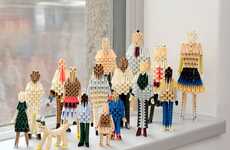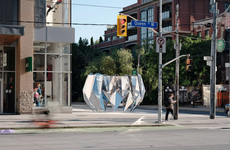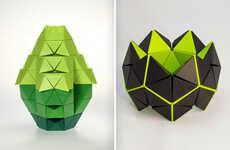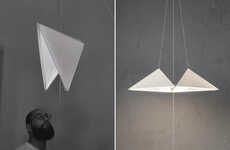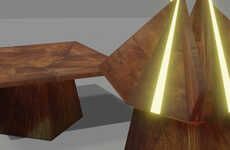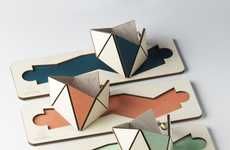
The Wrinkled World of Paper-Folding
Katie Cordrey — January 19, 2009 — Art & Design
Tomohiro Tachi folds origami, amazing and complex origami. Many of the pieces, including the Rubik’s Cube and the Teapot featured in the gallery, are folded from a single uncut square. He’s posted a paper about the technique and uses software to help him engineer other forms. The work is especially wonderful because of the strong 3D aspect. Unlike many traditional origami forms, these are nearly sculptural. The teapot is impressive, but the rabbit is also a masterful application of the art of paper folding.
Tachi’s architectural installations are essentially origami on a gigantic scale. Their visual simplicity and textural qualities are difficult to resist.
Tachi was born in Japan, in 1982; he received his MA in architecture in 2007 from the University of Tokyo, where he is now pursuing doctoral studies. You can see more of his origami on Flickr; some of his pieces, including folding patterns are on his Japanese website.
The YouTube video demonstrates folding a man in a hood.
Tachi’s architectural installations are essentially origami on a gigantic scale. Their visual simplicity and textural qualities are difficult to resist.
Tachi was born in Japan, in 1982; he received his MA in architecture in 2007 from the University of Tokyo, where he is now pursuing doctoral studies. You can see more of his origami on Flickr; some of his pieces, including folding patterns are on his Japanese website.
The YouTube video demonstrates folding a man in a hood.
Trend Themes
1. Extreme Origami - Disruptive innovation opportunity: Explore how extreme origami techniques can be applied to create complex and visually stunning sculptures, merging art and craftsmanship.
2. 3D Origami - Disruptive innovation opportunity: Investigate the use of 3D origami to create architectural installations and large-scale sculptures, pushing the boundaries of traditional origami designs.
3. Origami Engineering - Disruptive innovation opportunity: Develop software and tools for origami engineering, enabling artists and designers to create intricate and intricate origami forms with precision and efficiency.
Industry Implications
1. Art and Sculpture - Disruptive innovation opportunity: Integrate extreme origami techniques into the art and sculpture industry, offering new possibilities for unique and intricate artwork creation.
2. Architecture and Design - Disruptive innovation opportunity: Apply 3D origami techniques to the field of architecture and design, introducing innovative and visually striking structures and installations.
3. Software and Technology - Disruptive innovation opportunity: Develop origami engineering software and tools to cater to the needs of artists, architects, and designers for precise and efficient origami form creation.
5.5
Score
Popularity
Activity
Freshness



